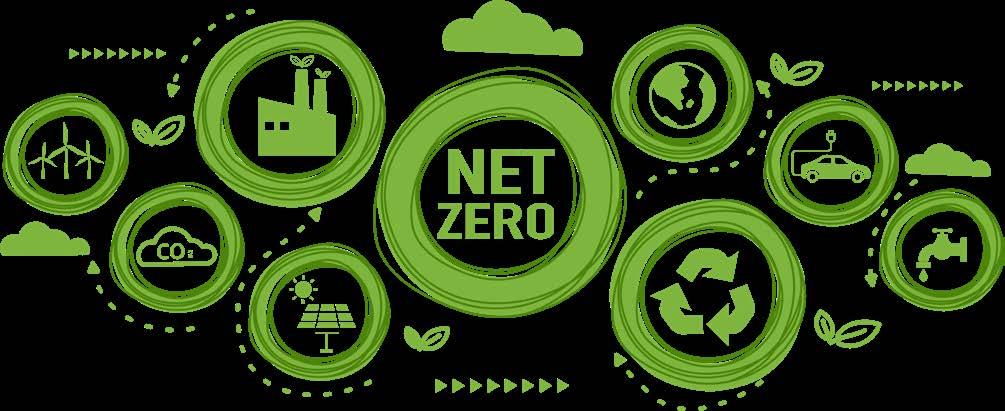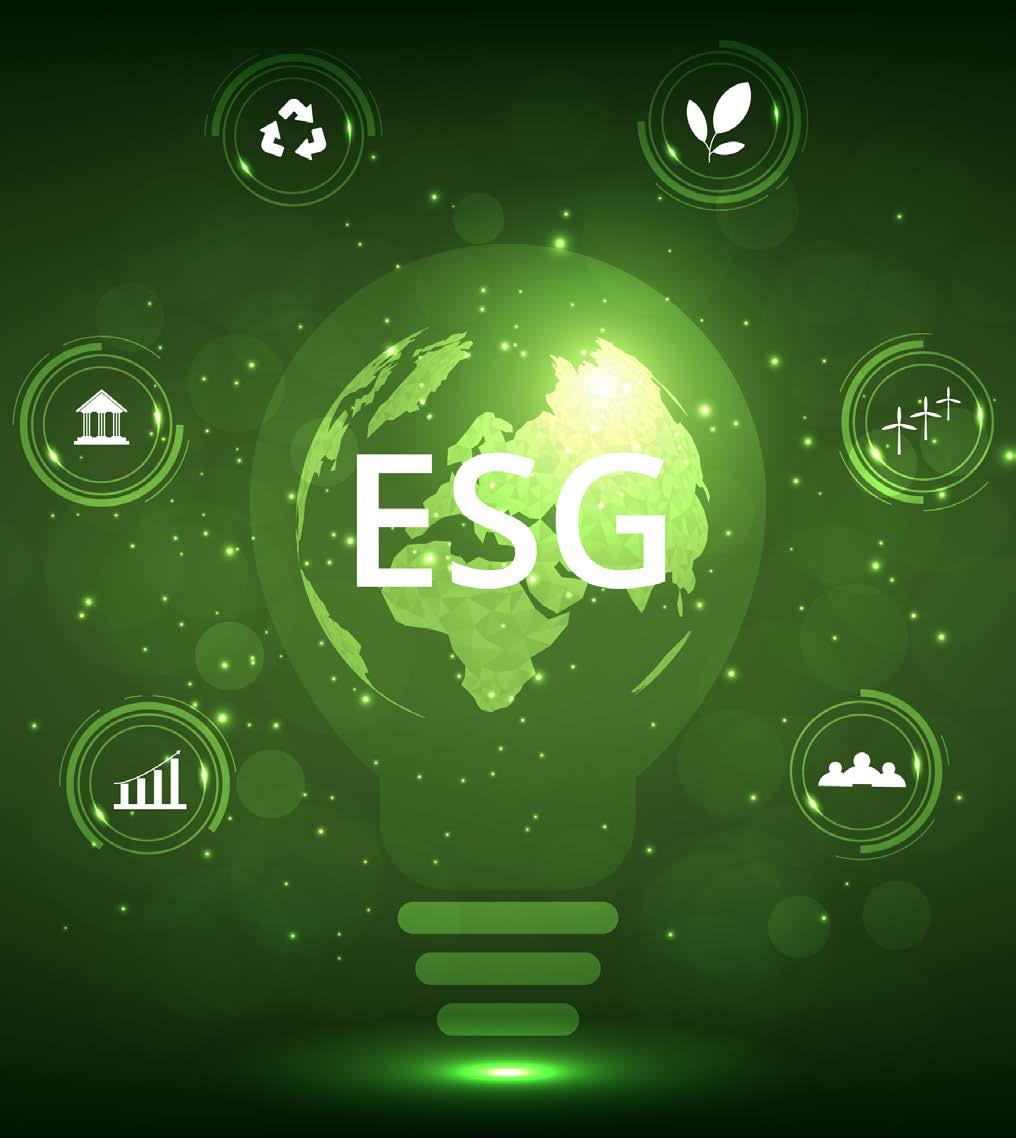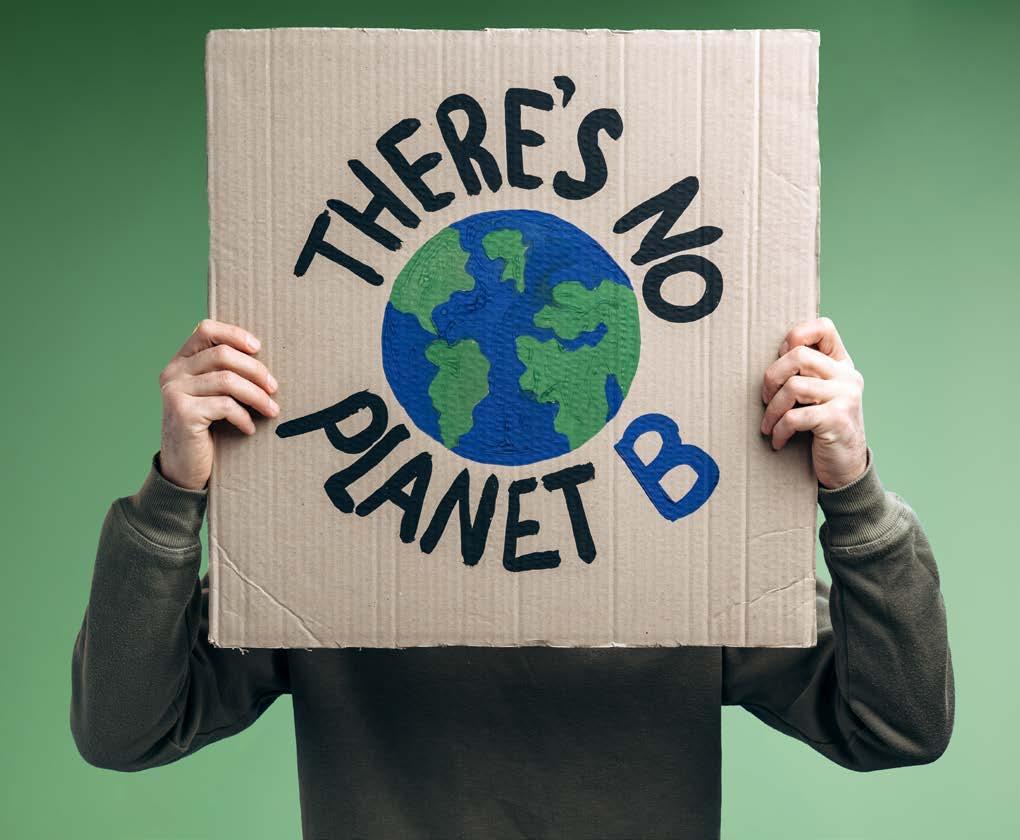
8 minute read
The Road to COP28

By Laura López Mingo & Elias El Mrabet
Advertisement
Sustainable finance has advanced globally since 2015, through new initiatives and the development of existing policies, including in the Middle East and North African region (MENA). The Doha declaration was a key step in honing the region in the international sphere. By hosting the negotiations, the region showed its desire to coordinate and align with international standards on sustainable finance. Most recently, Egypt hosted COP 27 in Sharm El Sheikh and the UAE will host next year’s Conference of the Parties. To decarbonise the economy and meet the Paris Agreement, countries need to finance the green transition. So far, only 3 countries have made clear decarbonisation commitments: Bahrain (2060), Saudi Arabia (2060) and the United Arab Emirates (2050). The financial sector has a central role in helping to finance the green transition and is doing so through green bonds, a debt instrument that uses green and sustainability-linked debt and has reached a fourfold increase to $18.7 billion in 2021 from the previous $4.5 billion in 2020 to plan and finance the transition, the financial sector has launched new initiatives:
• In 2018, the Union of Arab Banks, with representatives and bankers of central banks, met to encourage the region’s financial sector to actively finance sustainable development and green banking projects. The Union made pledges to shift to green finance through objectives such as creating a specialised department for sustainable finance, raising awareness and introducing green products to their portfolios.
• In 2019, the Islamic Development Bank (IsDB), supported by Saudi Arabia, successfully issued the first green Islamic bond referred to as a sukuk for €1 billion under its Sustainable Finance Framework that would be used to finance green projects. Two years later the largest ever US-dollar public financing sukuk was issued for $2.5 billion with sustainability use of proceeds.
• Also in 2019, twenty-five UAE public and private entities signed the Abu Dhabi Sustainable Finance Declaration with principles designed to help banks integrate ESG criteria into their core businesses and strategies.
These initiatives are not binding in nature but show a predisposition and interest in sustainable Finance by gulf countries. Especially those initiatives that push for the adoption of voluntary corporate sustainability standards such as the Saudi National Sustainability Standards, Dubai Financial Market’s ESG Reporting Guide, Qatar Stock Exchange’s Guidance on ESG Reporting, Boursa Kuwait’s ESG Reporting Guide, and Bahrain Bourse’s ESG Reporting Guide. The green actions are helping the region reduce climate risk for the banking sector. The region needs to take action to reduce its climate risk because its geography sets it as one of the most sensitive regions to climate change. It is also heavily reliant on oil and gas, where the production represents over 40% of GDP in Gulf Cooperation Council countries, except for the UAE and Bahrain, The fast-changing geography and falling oil repositories mean that sustainable finance is the smart way forward for the region to invest in green projects and assure economic and political stability in the future. Issuing green sukuk is an excellent example of this change of direction and interest in sustainable financial products. However, there is still a need for expertise and confidence in the region’s use of sustainable finance and green bonds to ensure efficiency and trust. According to the Climate Policy Initiative, capital flows have been among the lowest in the Middle East and North Africa region to fund climate change initiatives in any global region.
For the moment, there is no green taxonomy in the region to define what constitutes a sustainable activity. The trend in some jurisdictions is to develop a national taxonomy taking into account international standards. Notably, now, standards are aligning internationally to facilitate a uniform framework for stakeholders to report and identify which of their economic activities are sustainable. Understanding the new regulatory frameworks can be challenging and timeconsuming. Greenomy and others are helping regulators, companies, credit institutions and asset managers to understand the new international rules and monitor the new developments in sustainable finance initiatives in the middle east. In its effort to accelerate the green transition, Greenomy is looking to develop partnerships in the region.
Uae
The UAE pledged to be climate neutral by 2050 in 2015 in the UN Paris meeting pledged $163 billion to its net-zero pledges and has recently confirmed it will host COP 28 in
November 2023. In 2020, the UAE published the first set of Guiding Principles on Sustainable Finance to advance the sustainability agenda
To advance its carbon-neutral transition, it issued its first green bond in 2022 and published the UAE’s Guiding Principles on Sustainable Finance roadmap setting sustainable finance initiatives and objectives. The roadmap has three pillars:
1. Mainstream sustainability in financial decision-making and risk management
2. Enhance supply and demand for sustainable finance products and green investment projects
3. Strengthen enabling environment that promotes sustainable finance practices through collaboration between financial and real sector stakeholders
The Net Zero by 2050 Strategic Initiative sets the path to achieving the UAE’s pledge to decarbonise. The initiative has short and long-term deliverables, the 3 key objectives in the short term are:
1. To strengthen the ESG corporate disclosure standards

2. To encourage sustainable corporate governance structures in UAE enterprises
3. Develop a green taxonomy of sustainable economic activities to guide investors and set the path for the economic transition needed to achieve its 2050 pledge.
Dubai
The UAEs emirates are making a tremendous effort in adapting to the new international financial field. In Dubai, put forward 2 guides in sustainable finance: the Sustainable Investing Guide, to help investors navigate through sustainable and ESG investment offerings, and the Sustainable Issuance Guide, guiding the newly issued sustainable finance products. Dubai has also created a strategy, with deliverables for 2024 and DIFC’s Sustainability Framework divided into the ESG characteristics, commonly attributed to sustainable finance, necessary to contribute to the overall strategy:
1. Social: encouraging citizens’ collaboration and attracting talent to sustainable practices to increase what can sometimes be described as gross national happiness.
2. Environmental: fostering partnerships and environmental conservation

3. Governance: encouraging corporate transparency and accurate disclosures
Abu Dhabi
The capital of the UAE is a major player in fostering sustainable finance in the region so the Abu Dhabi Global Market (AGDM) recently published a consultation paper on the Proposal for a sustainable finance regulatory framework to ensure investor confidence that the risk of “greenwashing” has been appropriately mitigated through a robust regulatory framework so capital can be raised for investments seeking a positive environmental impact and financial returns. Green funds take center stage when talking about sustainable finance because it has positive measurable environmental benefits, so ADGM launched the ADGM Green Fund Designation for funds that will improve investors’ confidence in sustainable finance and use resources that follow a green taxonomy and assets that are a part of or follow an EU Parisaligned Benchmark.
The 2050 target is based on the UAE’s Guiding Principles on Sustainable Finance and led by the ADGM, there was a key strategic decision to make Abu Dhabi into a hub for sustainable finance. As a first step to this, in 2019, ADGM published the ADGM Sustainable Finance Agenda which is divided into 4 main pillars:
1. Regulation: to develop a legislative framework for sustainable finance
2. Collaboration: to ease and align the cooperation between national and international stakeholders involved in advancing the sustainable finance agenda
3. Awareness: to increase acceptance and attraction to sustainable finance solutions through events, education and training.
4. Ecosystem: to create unity for institutions, products and services in sustainable finance
On 19th January 2023, the Abu Dhabi Sustainable Finance Forum, (ADSFF) took place as part of the Abu Dhabi Sustainability Week bringing together top global institutional investors, selected government leaders, regulators and financial institutions to discuss areas of collaboration to increase the flow of capital towards sustainable investment. A key segment of the forum was the Sustainable Innovations Champion Showcase where Greenomy has been shortlisted to present our solution and to advance sustainability in the region.
Since 2019, ADGM is collaborating with key UAE regulators and ministries to develop a UAE-wide harmonised taxonomy for sustainable finance. This is a key development in the region because it is showcasing the country’s dedication to developing its sustainable finance sector. Greenomy and its strategic partner Euroclear, which is present in the UAE and, following it with great interest. The publication of the UAE’s taxonomy will implement a framework for national corporations and financial institutions to create environmental pledges, and sustainable roadmaps and attract talent to the region. Internationally, it will attract new green investments and connect them to the international capital markets, as it is already happening in other countries such as Singapore, South Africa and Panama.

Qatar
Qatar has also taken steps to advance its sustainable finance roadmap. From 2017 to this year, the Qatar Financial Centre (QFC) together with the Qatar Central Bank (QCB) and Qatar Financial Markets Authority (QFMA) Qatar implemented the Second Strategic Plan for Financial Regulation. Previously, the General Secretariat for Development Planning (GSDP), with the guidance of Qatar’s Higher Authorities, have been coordinating the National Strategy to launch the Qatar National Vision 2030 (QVN 2030) to provide a framework for national development strategies, trends and available options. To achieve the objectives of the QVN 2030, the Ministry of Development and Statistics published the National Development Strategy 1 for 2011 to 2016 and in 2019, the National Development Strategy 2 for 2018 to 2022. The latter aims to foster sustained economic prosperity, promotion of human development, integrated methodology for social development, and environmental preservation for future generations (sustainable environment).
Qatar has pledged to cut its emissions to 25% by 2030, to finance this transition, Qatar National Bank (QNB) issued its first green bond for USD 600 million in 2020 and it launched its ESG guidance sustainability platform and its first ESG tradable index.
Saudi Arabia
Saudi Arabia’s Crown Prince Mohammed bin Salman pledged the Public Investment Fund would be net zero by 2060 and launched green bonds to start its transition, the first green bond issued in Saudi Arabia made a profit soon after it was issued and is referred to as the green century bond.
In February 2022, Saudi Arabia’s Sovereign Wealth Fund (PIF) set a strategy to raise green debt to prepare the country for the expected lower oil levels. The PIF’s roadmap included issuing debt linked to environmentally friendly goals and selling green bonds. Moreover, the country has strengthened its position relative to other countries in the region after it published its Saudi Green Initiative which was recorded in the Arab Financing for Development Scorecard of the UN.

In Egypt this year, Saudi Arabia presented 66 initiatives as part of its environmental plan at the climate change summit. The Kingdom has developed the initiatives in among other pillars: the circular carbon economy and promoting sustainability. Furthermore, in the Middle East Green Initiative (MGI) Summit the Crown Prince pledged $2.5 billion to support emissions reduction.
Conclusion
Overall, the MENA region is showing steady progress in developing policies that will help achieve sustainability goals. It is certain that to finance the green transition, the region’s players will need to increase their trust in sustainable finance and governments need to fund initiatives to encourage partnerships and understanding of the sector. Through the development of action plans, roadmaps and strategies, governments can avoid greenwashing in the region and increase investors’ trust.
Taxonomies are an excellent approach to hone this trust and encourage investment into sustainable economic activities. The UAE has shown its desire to lead the region’s sustainability journey through the initiatives mentioned above in Dubai and Abu Dhabi, and by hosting next year’s COP, which will further extend the country’s sustainability agenda to foreign investors and governments. The release of the UAE’s taxonomy will be an excellent opportunity for the country to be a standard setter in the region, helping to develop new national taxonomies and thus encourage a better flow of capital.
The green bonds that have been issued in the region have had ample finance and attraction which shows the region’s interest in green solutions. With the pledges made in COP27, new bonds and solutions are to be expected. The publication of guidelines has allowed investors to have a clear understanding of what their investments are contributing to and to identify how sustainable their investments are. The region’s commitment to sustainable initiatives is key to mitigating climate risks.










